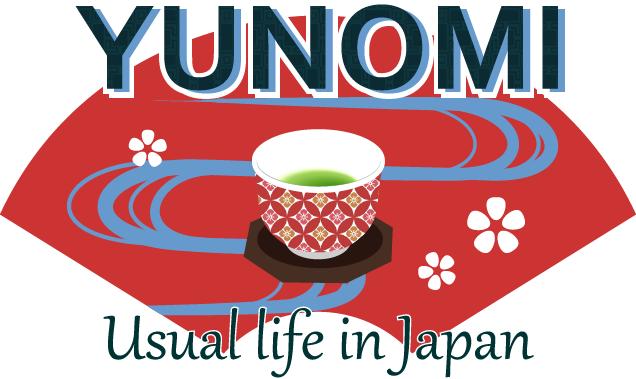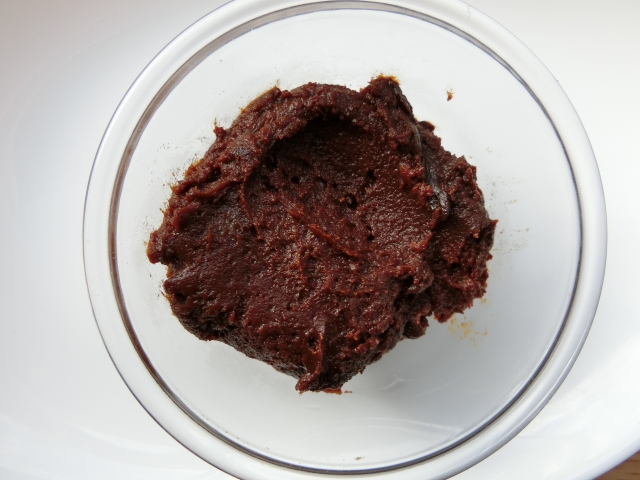Soy bean paste : Like soy sauce, miso is made from soy beans.It is a paste-like condiment mostly in a brown color.
It's a thick paste, usually some shade of reddish-brown, made by mixing crushed boiled soybeans with salt and a koji fermenting agent produced from rice, barley, wheat or beans. Traditionally the mix was wrapped in straw and left to ferment for between two months and two years.
Protein-rich miso is one of the essential elements of Japanese cuisine. It has been around since at least the 7th century, and the standard fare of rice (barley for the poor), miso soup and pickles was established by Buddhist monks around the 13th century.
Soy bean paste is also an important condiment that is indispensable to the Japanese people.
Recently, miso soup in particular has been valued as a health food that contributes to a balanced diet.
Miso is both nutritious and adds very distinct savory flavors, especially in the universally-popular miso shiru soup.
Many Japanese have miso soup for breakfast
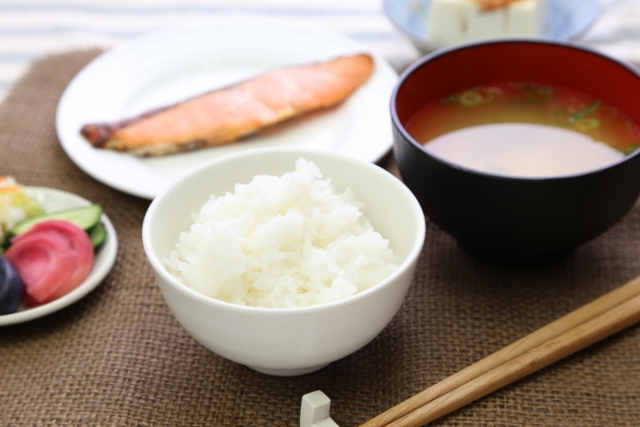
The basic breakfast version of miso shiru is made by adding several ingredients to broth, for example, tofu, seaweed, or vegetables, then stirring in the soy bean paste.
In addition to soup, it is used as seasoning for rāmen (a Chinese brand of noodle), rice balls, and all kinds of cookpot dishes.
Misozuke
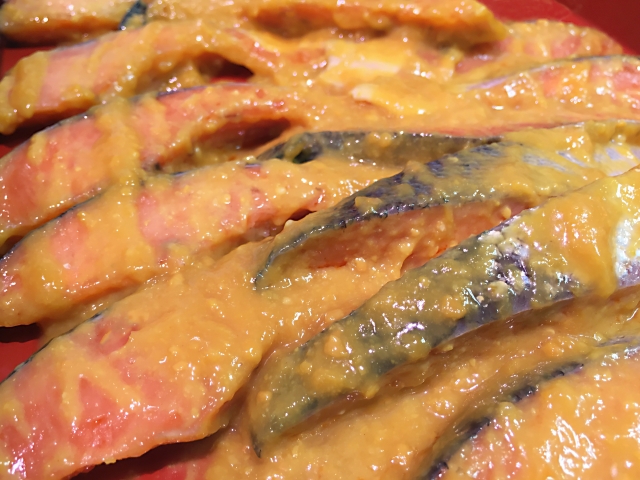
It's also used for preserving vegetables, fish and pickles (misozuké).
Fish or meat pickled in this miso keep for a long time and yet with enhanced taste.
Different varieties are favored around Japan.
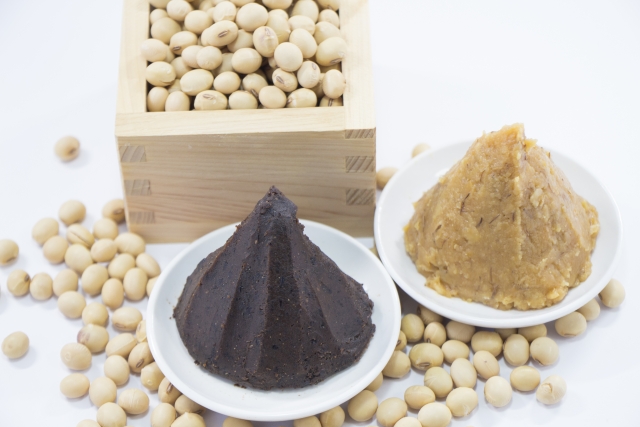
The color and flavor varies according to the ingredients, the processing and the fermenting time: the higher the kõji mold content, the sweeter the flavor; a shorter fermenting time produces miso with a light color close to the natural color of the beans, Whereas a longer time produces a darker, more brownish color.
The most common Honshu type is akamiso, the reddish rice miso (komémiso) with a 10-20% salt content made by steaming the soybeans with rice kõji.Saltier varieties (karakuchi) are common in Hokkaido, Tohoku and parts of Shikoku.Barley miso (mugimiso), made with barley kōji, is popular in Kyushu.The dark, thick hatchömiso (or mamémiso) made from just soybeans, bean kõji and salt, is popular in the Nagoya area and is often used for akadashi soup.
The milder shiromiso white miso (5-6% salt) made by boiling the beans is more expensive and preferred in western Japan. The 'sweetesť form is saikyōmiso from Kyoto, with only about 5% salt and a higher proportion of grain than soybeans.
Special types of miso are often served as a relish.
